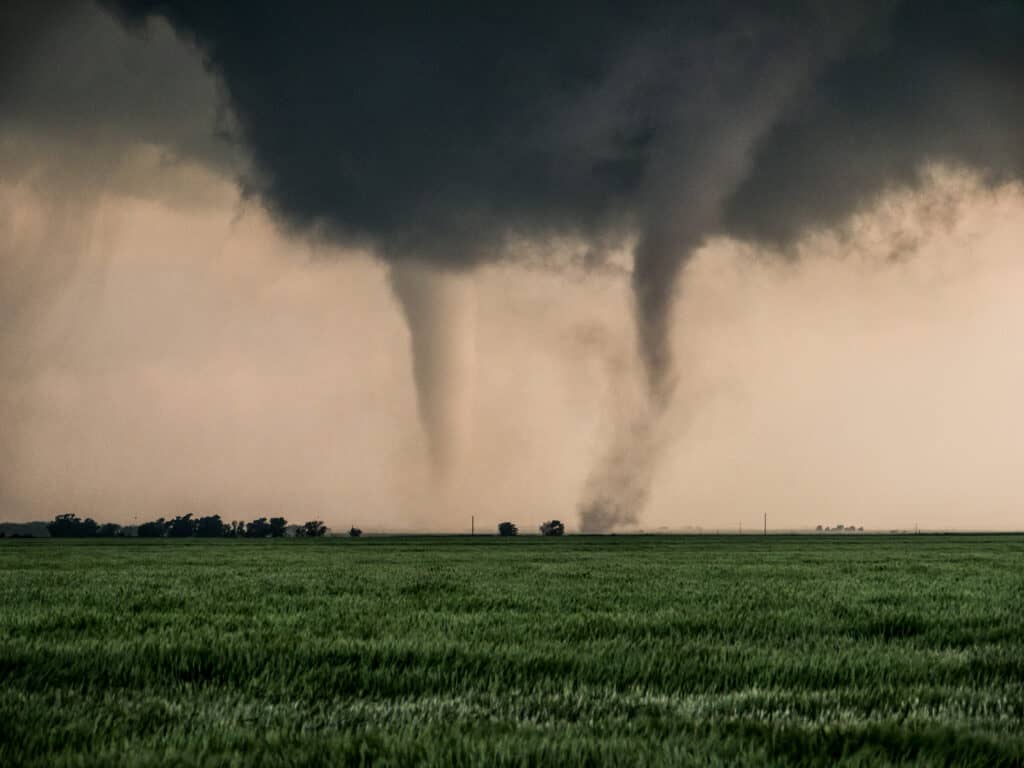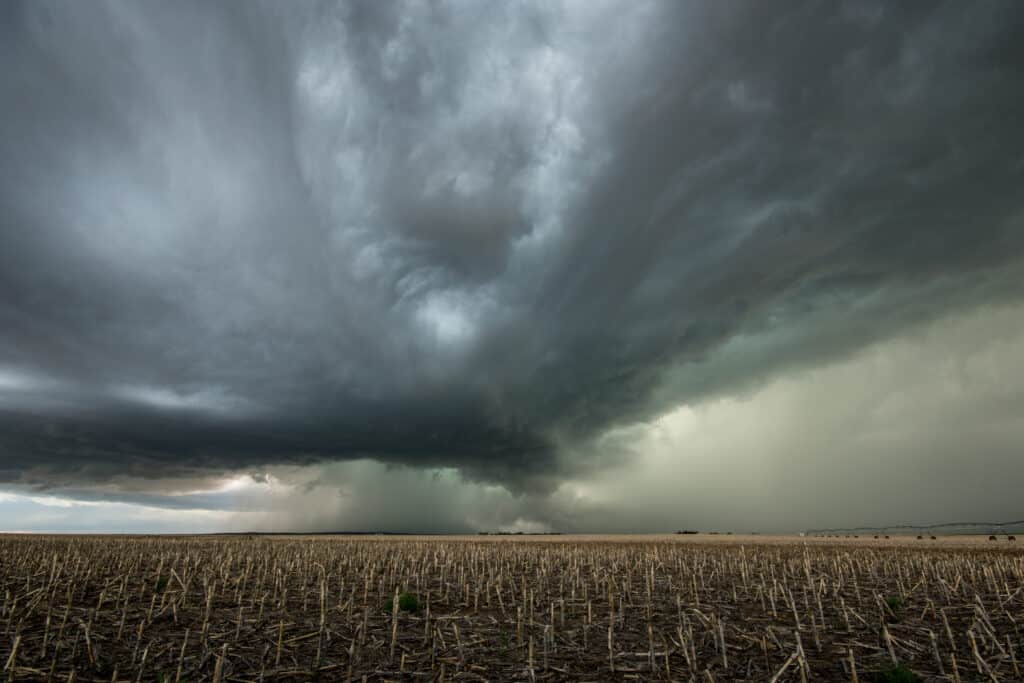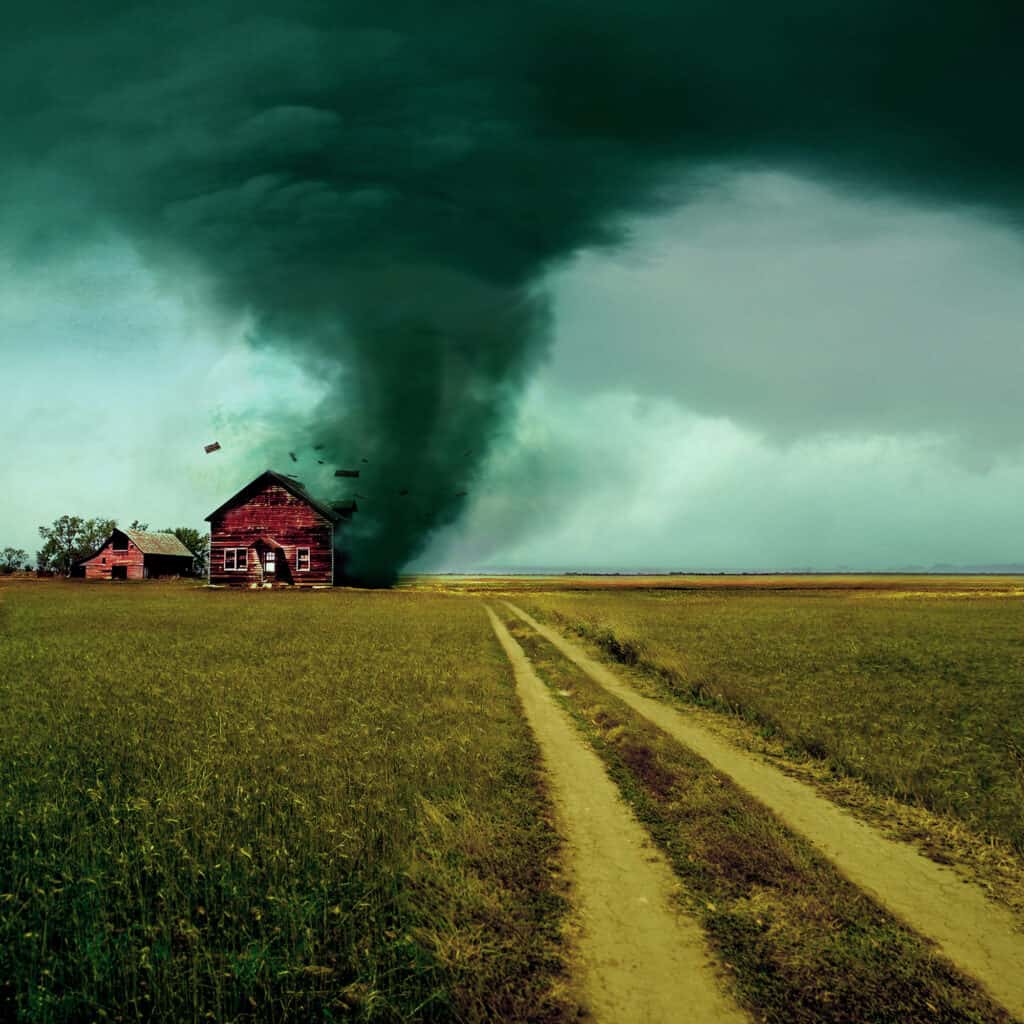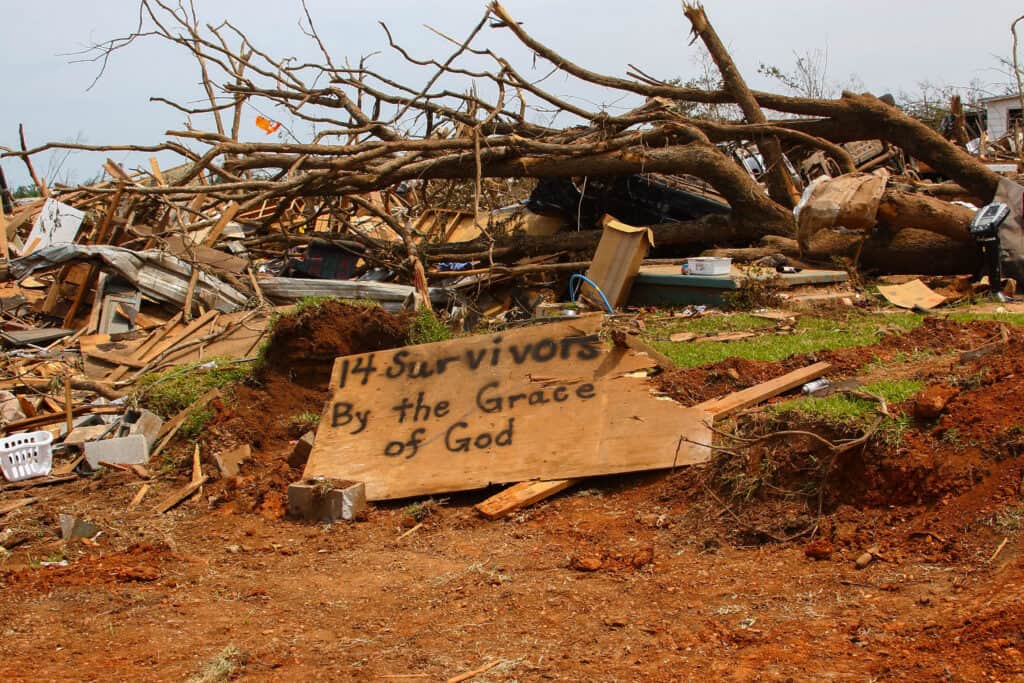Oklahoma is located in the heart of the United States, and it experiences tumultuous weather patterns, particularly during tornado season. The state falls within the region known as Tornado Alley. That is where geographical and atmospheric conditions combine to form a heightened frequency of tornadoes. Unfortunately, that means that tornado season can hit Oklahoma residents hard. That makes it essential to understand what the season looks like so you know what to expect. We have gathered everything you need to know.
Let’s dive in!
What Causes Tornadoes?
Tornadoes can occur with the convergence of warm, moisture-laden air from the Gulf of Mexico and cooler, drier air from the Rocky Mountains. When these air masses collide, the conditions become favorable for the development of thunderstorms, often leading to tornado formation. But that doesn’t necessarily explain why Oklahoma gets hit with so many tornadoes.
That is why we have to turn to the geography of Oklahoma to better understand the underlying cause. The state has a mix of prairies, plains, and hills, which can influence the intensity and path of tornadoes. But that is also a benefit. The flat landscapes in certain areas allow for greater visibility. So tornadoes are often more easily detectable.

Tornadoes can occur over land and over water.
©Hit1912/Shutterstock.com
Where Do Tornadoes Normally Hit in Oklahoma?
Tornadoes occur throughout Oklahoma, but certain regions within the state experience a higher incidence of these severe weather events. Central and eastern parts of Oklahoma, including areas close to Oklahoma City and Tulsa, have historically witnessed more tornado activity.
According to the National Weather Service, Cado and Oklahoma counties have experienced the most tornadoes in the state. Between 1950 and 2022, there were 127 and 128 tornados in each county (respectively). Canadian and Osage counties aren’t far behind, with 107 tornados each.

Tornadoes are devestating and unfortunately don’t always arrive as singles. Sometimes, there are multiple tornadoes in a single storm.
©Eugene R. Thieszen/Shutterstock.com
How Often Do Tornadoes Hit Oklahoma?
Oklahoma has earned a reputation as one of the most tornado-prone states in the United States. On average, the state experiences approximately 53 tornadoes each year. It ranks number eight in terms of tornado frequency. The states above include Texas, Mississippi, Alabama, Kansas, Louisiana, Illinois, Iowa, and Georgia.
The frequency of tornadoes in Oklahoma is due to its location within the heart of Tornado Alley. While most of the storms hit in the spring, between April and June, that doesn’t mean Oklahoma residents are safe the rest of the year. Unfortunately, tornadoes can occur throughout the year, so locals must remain vigilant and prepared even during the off-peak months.

Oklahoma is one of the most tornado-prone states in the country.
©Wesley Aston/Shutterstock.com
What Part of Oklahoma is the Safest From Tornadoes?
While tornadoes can strike any part of Oklahoma, some areas have historically experienced fewer tornadoes. The southwestern portion of the state, including cities such as Lawton and Altus, has seen relatively lower tornado activity.
Adair, Choctaw, Coal, Harmon, Harper, Haskell, Latimer, Love, and Pawnee counties have all seen 32 or fewer tornadoes in the last 72 years.
One reason for this is the region’s proximity to the dryline, a boundary that separates moist air from the east and dry air from the west. The presence of drier air often inhibits the development of thunderstorms and tornadoes, providing some respite for residents in this area.
However, it is critical to note that no part of Oklahoma can be considered entirely safe from tornadoes. These storms are highly unpredictable and can change course rapidly. That means they could begin affecting areas that were previously considered less prone. Tornadoes have been known to deviate from their typical paths. So residents across the state need to have a well-defined safety plan, stay informed about weather updates, and seek shelter when necessary.

Oklahoma is right in the middle of Tornado Alley, so residents there have to deal with these violent storms regularly.
©EmiliaUngur/Shutterstock.com
Typical Tornado Season in Oklahoma
Tornado season in Oklahoma typically goes from early spring to late summer. While the season starts in April, the peak of tornado activity usually occurs in May and June. That is when the necessary atmospheric conditions align.
Tornadoes in Oklahoma are often associated with supercell thunderstorms. These are large, rotating storms characterized by a persistent updraft. These supercells can produce long-lived tornadoes. They are also frequently accompanied by large hail, damaging winds, and heavy rainfall. Residents should remain vigilant during this period. To do so, stay informed about weather conditions and have a safety plan in place to mitigate potential risks.
The forecasting and detection of tornadoes have improved significantly over the years. This is significant since it provides valuable lead time for residents to take necessary precautions. The National Weather Service (NWS) and local meteorological agencies have multiple tools and technologies, including Doppler radar, to monitor and track severe weather systems. They work hard to apprise state residents of storm activity.
Also, storm spotters spend much time in Oklahoma during tornado season. The trained volunteers observe and report tornado activity. They play a crucial role in enhancing tornado warnings and reducing the risks associated with these storms.

Tornado season in Oklahoma typically runs from April to June.
©Gregory Simpson/Shutterstock.com
Earliest Tornado on Record in Oklahoma
The earliest tornado on record in Oklahoma occurred when the state was still a territory. On May 5, 1893, a tornado of unknown size and path hit modern-day Oklahoma County. It wasn’t until after this tornado that additional records started to get kept.
The earliest tornado on record to hit Oklahoma after it became a state occurred on April 20, 1912. It crossed Oklahoma and Lincoln counties. The path of destruction reached up to 200 miles wide!

Tornadoes have existed long before we had the ability to measure their size and power. Now, thanks to advancements in science, we can better predict their arrival and path.
©solarseven/Shutterstock.com
How to Prepare for Tornadoes
In recent decades, advancements in tornado research and technology have allowed scientists to understand tornado formation and behavior better. Improved forecasting models and enhanced warning systems have significantly contributed to saving lives and minimizing property damage. But they are still a formidable force of nature. Residents should remain proactive. But what do tornado preparedness efforts look like?
Make a Plan
Have an emergency plan set for all members of your family, including your pets. Make sure you have items that you can quickly grab that will get you through a short (or long) term stay away from home in case the worst-case scenario happens.
Know Where Public Shelters Are
You won’t always be home when a storm strikes. Take time to learn where the various public shelters are so you can get there quickly if you need.
Listen
Pay close attention to your local news stations, meteorologists, or the NOAA Weather Station. They will have pertinent updates and the latest information on the tornado’s path and severity.
Stay Away From Openings
Windows, doors, and other building openings are one of the most dangerous places to be. Do your best to avoid them.
Seek Shelter
Don’t wait to seek shelter while you try to determine the path and severity of the tornado. Find a safe space immediately to wait out the threat. The ideal spots include basements, lower levels of the building, storm cellars, or interior rooms.
Seek a Flat Spot
Despite what you see in movies, do not try to ride the storm out under a bridge or overpass. It is best to stick to flat, open areas where you have visibility.

Take time to learn where the various public shelters are so you can get there quickly if you need.
©Sari ONeal/Shutterstock.com
Thank you for reading! Have some feedback for us? Contact the AZ Animals editorial team.








